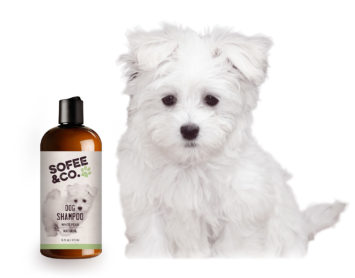Like humans, dogs can contract hypothermia if their body temperatures dip below healthy levels. However, dogs are more susceptible to severe hypothermia than we are since their bodies are (for the most part) smaller and their normal body temperatures are higher than ours.
It’s important to be able to recognize the signs of hypothermia in your dog—especially in the Winter months when most cases of dog hypothermia occur—in order to provide your dog with the right treatment and know how to prevent it from happening to your beloved pet in the first place.

What is dog hypothermia?
Dog hypothermia is a condition in which a dog’s body is unable to maintain its normal temperature and thus, it dips significantly. The dog’s body begins to release more heat than it absorbs. The normal body temperature for dogs is between 101 and 102.5 degrees Fahrenheit. Thus, for dogs, any body temperature below 100 degrees is considered hypothermia. The three phases of low body temperature in dogs which lead to hypothermia are as follows:
- Mild hypothermia—body temperature is between 90 and 99 degrees
- Moderate hypothermia—body temperature is between 82 and 90
- Severe hypothermia—body temperature dips below 82 degrees
This decrease in the dog’s body temperature causes a depression in her central nervous system which can lead to slow, shallow breathing, decreased heart rate, a weakened immune system, irregular blood flow and, in cases of sustained hypothermia, loss of consciousness possibly resulting in coma or death.
Why and When do Dogs Get Hypothermia?
The most common causes of dog hypothermia are exposure to low temperatures for long periods of time, wet skin or fur, shock and being immersed in cold water for a long time. However, newborn dogs can develop hypothermia in normal temperatures due their high sensitivity to cold. Furthermore, smaller breeds of dogs and older dogs are at greater risk of hypothermia.
Damp fur or skin will get a dog cold faster than low air temperatures as will being submerged in cold water for an extended period of time. Be sure to check on your dog to see if they’re warm enough when they are in either of these scenarios.
Diseases that make it hard to regulate their body temperatures also increase dogs’ risk of hypothermia. Hormonal imbalances, kidney disease, low blood sugar and any illness that interrupts normal blood flow can cause hypothermia. Disease of the hypothalamus (the part of the brain that regulates body temperature) can also trigger hypothermia. Additionally, hypothyroidism, a condition in which the thyroid gland does not produce enough crucial hormones, can be the impetus.
What to Watch Out For. How to Know if Your Dog Has Hypothermia.
The first symptom of hypothermia you’ll notice in your dog is excessive shivering. Occasionally shaking is completely normal, but if your dog is continuously shivering, this is cause for concern. Smaller breeds of dogs shiver in normal temperatures, but shivering due to hypothermia will be much stronger than the usual shake and it will be uncontrollable.
Dogs with hypothermia often become lethargic. If this is the case with your dog, you will notice her moving slower. Lethargy goes beyond being tired; if your dog is usually active, you will notice them become listless and unmotivated. You may have to drag them along on their leash while walking them or verbally instruct them to move multiple times. Your dog may even give up on movement or eating. If your dog reaches this point of helplessness, seek immediate medical attention.
Other symptoms of dog hypothermia to watch out for are low heart rate, difficulty breathing and fixed and dilated pupils.

Immediate Emergency Care & How to warm a dog with hypothermia
Respond to the very first signs of hypothermia by getting your dog out of the cold. Move her indoors and wrap her in a fleece blanket, put a hot water bottle wrapped in a towel (so as to avoid burning) next to her abdomen, or place her on a heating pad. You’ll want to raise your dog’s internal and external body temperature, keeping them at an even base without going too low. Make sure your dog’s temperature stays stable by taking thermometer readings at ten-minute intervals. Once your dog’s temperature reaches a stable 100 degrees, you can unwrap her from the fleece blanket, take her off the heating pad or away from the hot water bottle. Keep your dog inside in a room where the temperature is controlled (with either heating or air conditioning).
In extreme cases, the vet may need to intravenously inject a warm water enema or fluid into your dog.
Try to keep your dog still while warming her, as movement can lead to further heat loss and potentially a deadly irregular heartbeat. Don’t worry if your dog’s body temperature drops while you’re warming her; this is to be expected while contact is made between the warmer blood and the colder body surface.
Prevention of Dog Hypothermia
Take notice of the time your dog spends outdoors in the cold, Winter months. Make sure your dog isn’t exposed to freezing cold temperatures for long amounts of time. Be extra careful if your dog is a newborn, elderly, sick, weak or a smaller breed. Dogs with hypoglycemia and short hair are also more susceptible to developing hypothermia. If your dog prefers to spend a lot of her time outdoors, consider purchasing or building an insulated dog house for the colder Winter season.
Remember to think about your dog’s comfort in the Winter months. Don’t leave your dog outside in the cold or in her dog house all night long even she prefers to stay out at night during the warmer months. In sum, dog hypothermia can be prevented simply by using common sense. If you feel that it’s too cold for you to go outside, even while wearing your coat and all your other Winter gear, it’s probably too cold for your dog as well.
![Best Cheap Dog Foods - our Top 10 Picks of High Quality Brands That Are Still Affordable [Under $1 per pound!] in 2023 Best Cheap Dog Foods - our Top 10 Picks of High Quality Brands That Are Still Affordable [Under $1 per pound!] in 2023](https://shihtzuexpert.com/wp-content/uploads/2018/01/Best-Cheap-Dog-Food-Featured-image.png)
![10 Best Dog Crates for Separation Anxiety [High anxiety dog crates 2019 Reviews] 10 Best Dog Crates for Separation Anxiety [High anxiety dog crates 2019 Reviews]](https://shihtzuexpert.com/wp-content/uploads/2019/05/5-3.jpg)
![Custom shape wireless dog fence [Electric Fencing and Electric Barrier Systems] Custom shape wireless dog fence [Electric Fencing and Electric Barrier Systems]](https://shihtzuexpert.com/wp-content/uploads/2019/07/Custom-Shape-Wireless-Dog-Fence-Review.png)

